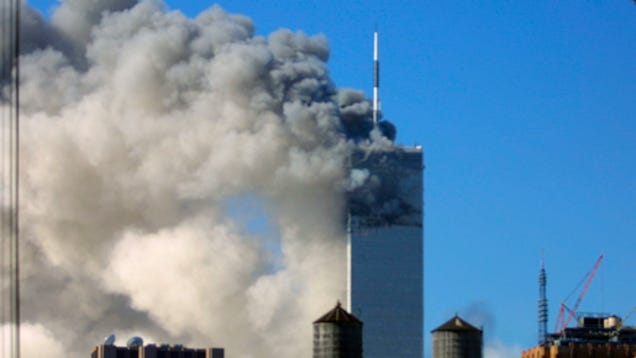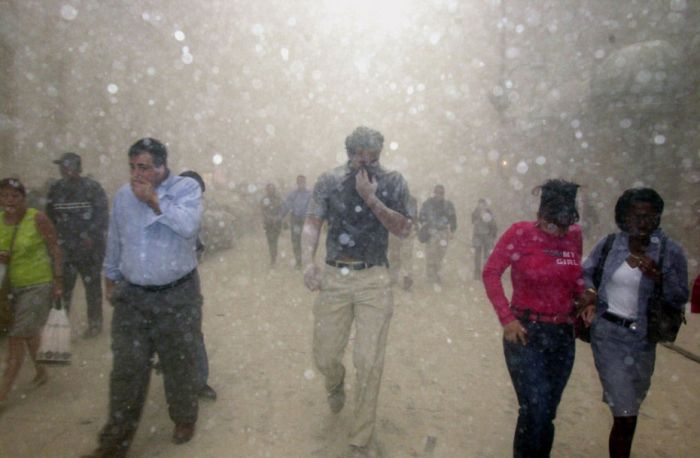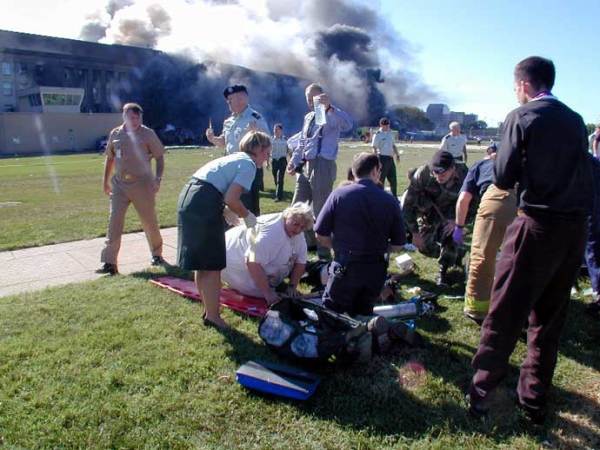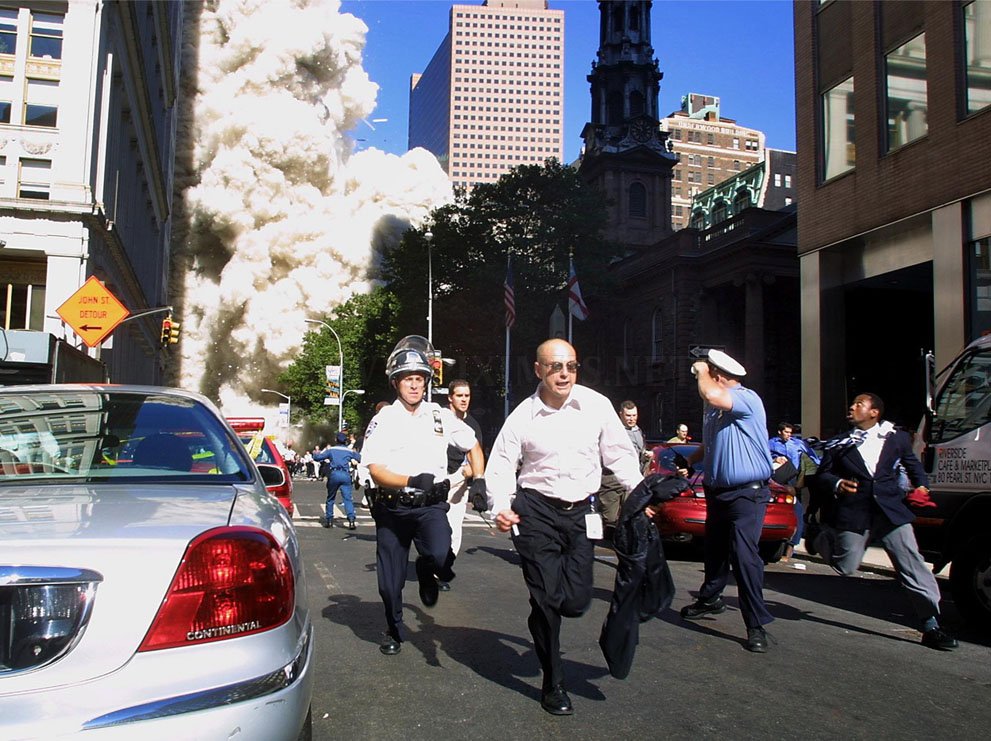The September 11 attacks were a series of airline hijackings and suicide attacks committed in 2001 by 19 terrorists associated with the Islamic extremist group al-Qaeda. It was the deadliest terrorist attack on U.S. soil; nearly 3,000 people were killed. The attacks involved the hijacking of four planes, three of which were used to strike significant U.S. sites.
American Airlines flight 11 and United Airlines flight 175 were flown into the World Trade Center's north and south towers, respectively, and American Airlines flight 77 hit the Pentagon. United Airlines flight 93 crashed in a field near Shanksville, Pennsylvania, after passengers attempted to overpower the hijackers. On September 11, 2001, 19 militants affiliated with the Islamic extremist group al Qaeda hijacked four commercial airliners with the purpose of carrying out suicide attacks against targets in the United States. Two of the planes were flown into the twin towers of the World Trade Center in New York City, a third plane slammed into the Pentagon just outside of Washington, D.C., and the fourth plane crashed in a field in Shanksville, Pennsylvania. The coordinated attacks killed thousands of people and injured scores more, making it the deadliest terrorist attack on U.S. soil.
The devastating terror attacks propelled the nation into what would become its longest war. On September 11, 2001, 19 militants associated with the Islamic extremist group al Qaeda hijacked four airplanes and carried out suicide attacks against targets in the United States. Two of the planes were flown into the twin towers of the World Trade Center in New York City, a third plane hit the Pentagon in Arlington, Virginia, just outside Washington, D.C., and the fourth plane crashed in a field in Shanksville, Pennsylvania.
Almost 3,000 people were killed during the 9/11 terrorist attacks, which triggered major U.S. initiatives to combat terrorism and defined the presidency of George W. Bush. ON SEPTEMBER 11, 2001, as all the world now knows, a Boeing 767 jet flew into the North Tower of the World Trade Center in Lower Manhattan. The attack also placed unprecedented demands on New York City's public health, health care, and social service systems.
I was in graduate school in Chicago, when the September 11 terrorist attacks happened. In the days, weeks, months, and years after that fateful day, both the world around me, and my own life, changed. As a Muslim male from Pakistan, I had to get accustomed to being selected "randomly" for screening at the airports.
In August 2004, my wife and I, along with our three-month-old son, were questioned for hours as we returned from Pakistan. We were whisked away in a special office while the immigration officers went through receipts in my wallet. To this day, my boarding passes, in addition to my name and seat number, usually have SSSS printed on them—a sign that I need a secondary inspection before I board the flight. I learned to appreciate what it means to be the other, the outsider. The attacks are the deadliest terrorist attacks in world history, causing the deaths of 2,996 people and injuring more than 6,000 others.
The death toll included 265 on the four planes ; 2,606 in the World Trade Center and in the surrounding area; and 125 at the Pentagon. Most who died were civilian; the rest included 340 firefighters, 72 law enforcement officers, 55 military personnel, and the 19 terrorists. More than 90 countries lost citizens in the attacks; for example, the 67 Britons who died were more than in any other terrorist attack anywhere. In the space of less than 90 minutes on a late summer morning, the world changed. Nearly 3,000 people were killed that day and the United States soon found itself mired in what would become the longest war in its history, a war that cost an estimated $8 trillion. The events of 9/11 not only reshaped the global response to terrorism, but raised new and troubling questions about security, privacy, and treatment of prisoners.
It reshaped US immigration policies and led to a surge in discrimination, racial profiling, and hate crimes. On September 11, 2001, nineteen terrorists who were members of al-Qaeda, an Islamist extremist network, hijacked four commercial airplanes. In a coordinated attack, the hijackers intentionally flew two of the planes into the Twin Towers of the World Trade Center, and a third into the Pentagon. Learning about the other hijackings, passengers and crew members on the fourth plane launched a counterattack, spurring the hijacker pilot to crash the plane into a field in Pennsylvania. Nearly 3,000 people were killed on that day, the single largest loss of life resulting from a foreign attack on American soil. TWENTY YEARS AGO this September 11th, as word spread of an incident in New York, people around the world gathered around the nearest TV screen and, for the first time, watched footage that would become infamous.
Small huddles of people on the street, in bars, schools and building sites shared disbelief as first one, then another aircraft hit each of the twin towers ofNew York's World Trade Centre. And as one, then the other tower collapsed, it became clear what they were witnessing was an event of historical magnitude. Whispers of another attack on the Pentagon, and of a plane crash somewhere else added to the confusion of a day that would change the world.
It had been nearly 30 years since the Palestinian terrorist attacks at Rome airport in 1973, which killed 34 people and demonstrated that air travel was vulnerable to international terrorism. "That seemed to have changed the whole security structure in Europe and in the Middle East in a way that didn't really penetrate the American psyche," O'Keefe said. "It's this typical American mindset; we have to experience it to believe it." New York's World Trade Center — along with its iconic Twin Towers — crumbled after two hijacked planes crashed into them, killing thousands of people as it fell to the ground below.
In Arlington, Virginia, the heart of America's military — the Pentagon — came under the same attack as a jet slammed into the western side of the building. And in Shanksville, Pennsylvania, brave passengers fought to stop their hijacked plane from suffering a similar fate forcing the attackers to crash into a field. Al-Qaeda leader Osama bin Laden is considered the mastermind of the attacks, though Khalid Sheikh Mohammed was the operational planner. Mohammed came up with the tactical innovation of using hijacked planes to attack the United States, and al-Qaeda provided the personnel, money, and logistical support to execute the operation. He and 18 other terrorists, most of whom were from Saudi Arabia, established themselves in the United States, where some received commercial flight training.
All 19 hijackers died in the attacks, bin Laden was killed by U.S. forces in 2011, and Mohammed was captured in 2003. The September 11 attacks, also commonly referred to as 9/11, were a series of four coordinated terrorist attacks by the militant Islamist terrorist group al-Qaeda against the United States on the morning of Tuesday, September 11, 2001. On that morning, four commercial airliners traveling from the northeastern U.S. to California were hijacked mid-flight by 19 al-Qaeda terrorists.
The hijackers were organized into three groups of five hijackers and one group of four. Each group had one hijacker who had received flight training and took over control of the aircraft. Their explicit goal was to crash each plane into a prominent American building, causing mass casualties and partial or complete destruction of the targeted buildings. Fifth, the attacks emphasized the importance of linking the public health system to health and mental health services. In the last few decades, New York City, like other jurisdictions, has separated public health and health care systems. When surveillance systems identified health problems, it was sometimes difficult to link people to the services they needed—for example, the occupational problems of immigrant cleanup workers or the mental health problems of uninsured Lower Manhattan residents.
Disaster Relief Medicaid was a creative partial response to this problem and demonstrated that government can cut red tape to meet emergent needs. In the longer run, the lack of a national health plan and the limitations of current mental health parity laws compromise the ability to respond to either disasters or routine health needs. First, the structure of government hampered its response to the crisis. The events of September 11th highlighted gaps in the environmental regulatory framework (e.g., outdated or inadequate standards for nonindustrial indoor air quality) and ambiguity about which of the 3 levels of government was responsible for what. Even where regulations existed , none had been construed with a WTC scenario in mind, and controversy thus arose over jurisdiction and applicability.
In some instances, this led to long delays in clear criteria regarding guidance, action, and clearance (e.g., residential cleanup), which were only addressed months after the attack.21 The lead agency for specific issues was not always identified in advance. While the city's mayor assumed leadership on public safety, no single agency claimed responsibility for health or the environment. Moreover, no prior mechanism existed for resolving conflicts—especially in the early days—between, for example, law enforcement and public health agendas (e.g., who had access to the Ground Zero "crime scene"). The authors describe and assess the strengths and weaknesses of the city's response to the public health, environmental/ occupational health, and mental health dimensions of the attack in the first 6 months after the event. They also examine the impact on the city's health care and social service system.
Mark Stahl of Somerset, Pennsylvania displays a photo he took early on September 11, 2001 after United Airlines Flight 93 crashed just outside of Shanskville. Stahl heard the crash and wandered up to the site where he took the photo before the area was cordoned off by rescue workers. The plane crashed shortly after two hijacked commercial planes slammed into the twin towers of the New York's World Trade Center, causing both 110-story landmarks to collapse. There was just a day between when the United States was attacked on 9/11 and nearly 3,000 people were killed and when President Bush decided he would go to war against terrorists.
And then it was just a week between the 9/11 attack and when Congress authorized an open-ended war on terror. President Bush talked diplomacy and sanctions against the Taliban, but we did not spend significant effort working on those alternatives. The US Global War on Terror expanded to more than 85 countries—including drone strikes, troops, advisors, and weapons. After 9/11, the United States tortured terrorism suspects in a secret government-sponsored program that shocked the conscience and the world with its cruelty and depravity. The United States lost its moral compass and international reputation as a human rights beacon.
Health professionals and lawyers working together played a critical role in designing, justifying, and carrying out the torture program in the CIA "Black Sites" and US military detention centers. We are reminded that 75 years after Nuremberg, medical professionals are vulnerable to using their medical skills to cause harm and even torture. Both health professionals in the "War on Terror" and the Nazi doctors justified their participation as "legal" under the current existing law, and on national security grounds (preventing another 9/11). Relatives of the victims descend on ground zero in Lower Manhattan, and the events of that terrible day and the weeks, months, and years that followed are never forgotten, nor are the memories of those killed by terrorists in hijacked planes. Middle school teachers very quickly are able to decipher kids running in the hallway. I heard an "oh my God," at which point I walked quickly to look out into the hallway.
One of my teacher teammates was approaching the room as I was opening the door. When I turned it on, we were immediately heartbroken for the people that were on the plane as well as those in the building that was just hit. That only lasted for a minute as the news camera focused on the burning building caught a glimpse of a second plane hitting the second tower. Immediately we knew our country was under attack, and we were sitting in the middle of a military town.
A number of my students' parents were living in the neighborhood solely because they were enlisted in the military. We remember what we were doing, where we were at, when we heard what was going on on September 11 I was getting ready for work. It saw something on the news about the World Trade Center being on fire and I heard on the radio that a plane had hit the World Trade. LOUISVILLE, Ky. — September 11, 2001, has been called one of the darkest days in United States history. Nearly 3,000 people lost their lives in the terror attacks in New York City.
Certain parts of that footage is now infamous – but instead of offering every angle on key moments, the series takes a more immersive, real-time approach to its edit. "The terrorists knew that if they burned those buildings in that horrific way, it would be shown all around the world, that's what they were looking for." Bogado says. In that sense, the repetition of the moments the planes hit from every angle, or the moments each tower collapsed, perpetuated the terror of the day – but perhaps also betray the suddenness with which the events transpired under the eyes of New York. Which meant the filmmakers had choices to make to keep the documentary's near real-time narrative cohesive. On that morning 20 years ago, four airplanes, hijacked by members of militant Islamist group al-Qaeda, flew into the Twin Towers in New York City, the Pentagon building in Arlington, Va.
The fourth plane crashed in an open field in Pennsylvania after passengers and crew attempted to regain control from the hijackers. Much about American life was permanently changed after the September 11 terror attacks. The impact of that day was so monumental that decades later, many still remember exactly what they were doing when they learned of the attack — down to the shoes they were wearing. On September 11, 2001, I was home getting my daughter ready for daycare when the planes hit the twin towers and the Pentagon.
The next day, September 12, I gave a talk at Brown University describing all the ways fear affects decision making—many of them not so good, including the tendency toward groupthink. I hoped the United States would spend more time thinking about the consequences of a potential war, and the alternatives to war, but Americans were so afraid, so angry, and frankly, so shocked, that we acted without much deliberation. Major stock sell-offs hit the airline and insurance sectors when trading resumed. Hardest hit were American Airlines and United Airlines, whose planes were hijacked for the Sept. 11 terrorist attacks. Gold prices leapt nearly 6% to $287 per ounce, reflecting the uncertainty and flight to safety of nervous investors.
Health effects extended to residents, students, and office workers of Lower Manhattan and nearby Chinatown. Several deaths have been linked to the toxic dust, and the victims' names were included in the World Trade Center memorial. Approximately 18,000 people have been estimated to have developed illnesses as a result of the toxic dust. There is also scientific speculation that exposure to various toxic products in the air may have negative effects on fetal development. ] analyzing the children whose mothers were pregnant during the WTC collapse, and were living or working nearby. A study of rescue workers released in April 2010 found that all those studied had impaired lung functions, and that 30%–40% were reporting little or no improvement in persistent symptoms that started within the first year of the attack.
The NATO council declared that the terrorist attacks on the United States were an attack on all NATO nations that satisfied Article 5 of the NATO charter. This marked the first invocation of Article 5, which had been written during the Cold War with an attack by the Soviet Union in mind. The Bush administration announced a War on Terror, with the stated goals of bringing bin Laden and al-Qaeda to justice and preventing the emergence of other terrorist networks. These goals would be accomplished by imposing economic and military sanctions against states harboring terrorists, and increasing global surveillance and intelligence sharing. In the South Tower, one stairwell, Stairwell A, was left intact after Flight 175 hit, allowing 14 people located on the floors of impact and four more from the floors above to escape.
New York City operators who received calls from people inside the tower were not well informed of the situation as it rapidly unfolded and as a result, told callers not to descend the tower on their own. In total 630 people died in the South Tower, fewer than half the number killed in the North Tower. Casualties in the South Tower were significantly reduced because some occupants decided to leave the building as soon as the North Tower was struck.
The failure to order a full evacuation of the South Tower after the first jet crash into the North Tower was described by USA Today as "one of the day's great tragedies". In New York City, more than 90% of the workers and visitors who died in the towers had been at or above the points of impact. In the North Tower, 1,355 people at or above the point of impact were trapped and died of smoke inhalation; fell or jumped from the tower to escape the smoke and flames; or were killed in the building's collapse. The destruction of all three staircases in the tower when Flight 11 hit made it impossible for anyone above the impact zone to escape.
On the morning of September 11, 2001, al Qaeda terrorists hijacked four commercial airliners in a strategically planned attack against the United States. These terrorists intentionally flew two jet airliners into the World Trade Center's Twin Towers in New York City and a third aircraft into the Pentagon in Arlington, Virginia. A fourth aircraft, United Airlines Flight 93, crashed into an open field in Somerset County, Pennsylvania, killing all passengers, crew members, and terrorists on board.
The four aircraft strikes killed nearly 3,000 people, the deadliest attack on American soil by a foreign entity. Sixth, the response to the WTC attack suggested new approaches to the education and training of public health professionals and toward public health research. In the moments before each plane crashed, passengers reached out to friends and family via cellphone.
A flight attendant reported that the hijackers were also armed with mace or pepper spray. "We must never forget the enduring pain of the families and loved ones of the 2977 innocent people who were killed during the worst terrorist attack on America in our history. For them, it was not only a national and international tragedy. It was a personal devastation." Almost 3,000 people were killed on September 11, 2001, after four U.S. planes were hijacked and crashed into both towers of the World Trade Center in New York, the Pentagon in Virginia, and a field in Pennsylvania. The ripple effects were felt by the nation and beyond in the days, years, and now decades that have followed.



























No comments:
Post a Comment
Note: Only a member of this blog may post a comment.